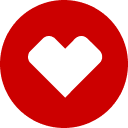
Pyrazinamide Coupons & Savings Card – Discount Prices from $61.74
My prescription
Edit
500MG, Pyrazinamide (90 Tablets)
Select pharmacy

CVS
$61.74
COUPON PRICE
Walgreens
$149.35
COUPON PRICE
Albertsons
$231.04
COUPON PRICE
Walmart
$268.34
COUPON PRICEPyrazinamide savings card
Show this card to your pharmacist
CVS
$61.74
BIN
ID
PCN
GRP
019876
LH97B87F81
CHIPPO
LHX
Powered by
Related antimycobacterials prescriptions
More prescriptions for tuberculosis
Related antimycobacterials prescriptions
More prescriptions for tuberculosis
Pyrazinamide dosage forms
Dosage Quantity Price from Per unit 500MG 90 Tablets $61.74 $0.69 500MG 1 Tablet $1.01 $1.01 500MG 60 Tablets $47.16 $0.79 500MG 100 Tablets $66.60 $0.67 500MG 500 Tablets $261.00 $0.52
| Dosage | Quantity | Price from | Per unit |
|---|---|---|---|
| 500MG | 90 Tablets | $61.74 | $0.69 |
| 500MG | 1 Tablet | $1.01 | $1.01 |
| 500MG | 60 Tablets | $47.16 | $0.79 |
| 500MG | 100 Tablets | $66.60 | $0.67 |
| 500MG | 500 Tablets | $261.00 | $0.52 |
Pyrazinamide Warnings
This medication comes with important safety considerations that you should be aware of. Below are key warnings and contraindications to guide safe use. Please discuss any concerns with your healthcare provider.
Liver Injury: Pyrazinamide may cause liver damage, especially in individuals with pre-existing liver conditions or those who consume alcohol frequently. A liver function test is necessary before starting the medication. Be vigilant for symptoms such as fever, loss of appetite, nausea, vomiting, dark urine, or a yellowing of the eyes or skin, as these may indicate liver issues. Contact your healthcare provider immediately if any of these symptoms occur.
Gout: The medication can elevate uric acid levels, potentially triggering gout flares. If you have a history of gout, inform your healthcare provider and provide details of your last flare-up. Your uric acid levels will be monitored before starting treatment. Report any joint pain or swelling during the course of therapy.
Diabetes Considerations: Although the relationship between diabetes and tuberculosis (TB) is not fully understood, diabetes might influence TB treatment efficacy. Disclose any diabetic condition to your healthcare provider to develop an appropriate management plan for both diabetes and TB.
Contraindications
Avoid using this medication if you have the following conditions, as it may result in significant health risks:
- Severe liver problems
- Frequent gout flares
Consult your healthcare provider if you fall into any of these categories or have questions regarding the use of this medication.
Pyrazinamide Side Effects
Common side effects:
- nausea
- vomiting
- loss of appetite
- muscle and joint aches
Less common but important to monitor:
- persistent nausea or vomiting
- severe stomach pain
- unusual tiredness
- yellowing of the skin or eyes
- dark urine
- changes in urine output
- painful or swollen joints
- gout-like symptoms
- sudden joint pain
Serious side effects:
- severe allergic reaction
- persistent fever
- swelling of lymph nodes
- rash
- itching
- swelling of the face, tongue, or throat
- severe dizziness
- difficulty breathing
Pyrazinamide Interactions
Interactions with moderate risk that may require dose adjustment, closer monitoring, or timing changes:
- Cyclosporine
- Ethionamide
- Rifampin
- Zidovudine
